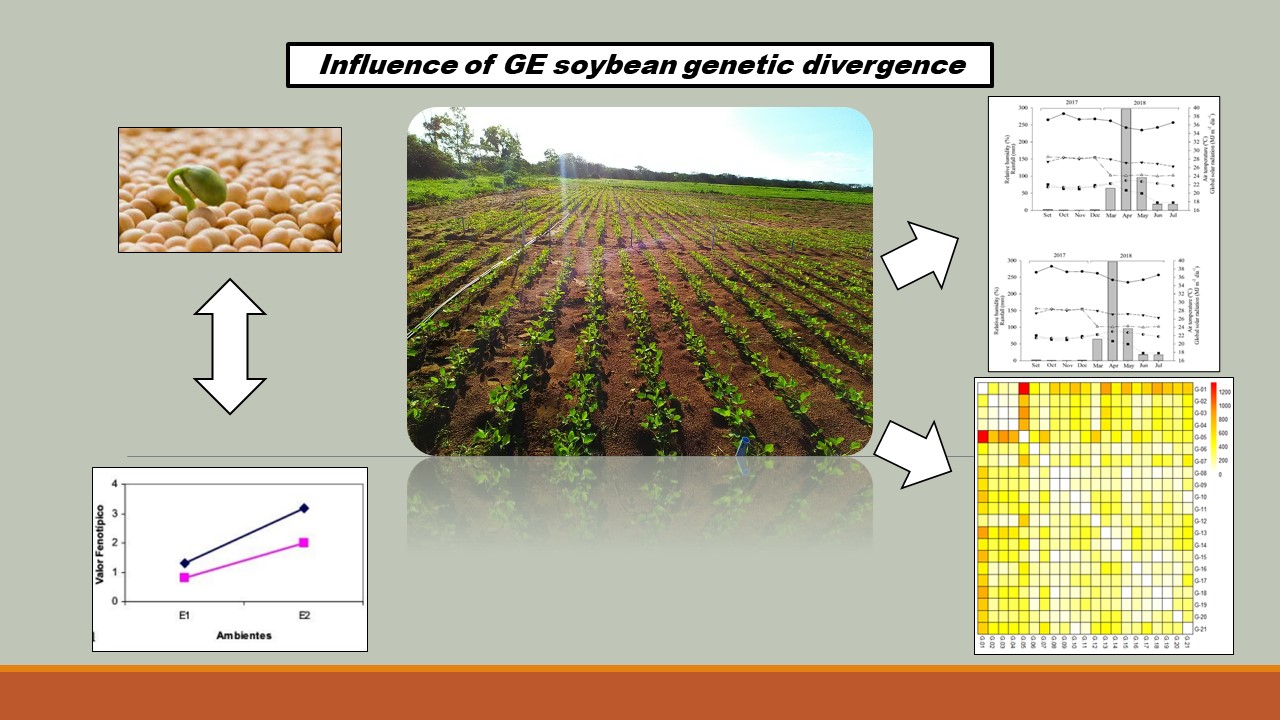Influence of genotype-environment interaction on soybean (Glycine max L.) genetic divergence under semiarid conditions
DOI:
https://doi.org/10.48162/rev.39.060Palabras clave:
Glycine max L., germoplasma, disimilitud, elección de padresResumen
The objective of the present work was to evaluate the influence of the genotype–environment interaction on genetically divergent soybean grown under semiarid conditions. Four experiments were carried out in randomized blocks with four replicates to evaluate twenty-one soybean genotypes. The following descriptors were used to quantify divergence: plant height, dry matter, oil content, number of pods per plant, number of grains per pod, the weight of 100 seeds, yield, days for flowering, and days for maturation. The unweighted pair group method with arithmetic mean was used to group the genotypes from the Mahalanobis distance matrix estimated using the genotypic means estimated by the REML/BLUP method. The grouping of genotypes depended mainly on the effects of the interaction between genotypes and years. The joint analysis, without the effect of the interaction, allowed us to obtain two groups of genotypes. The most recommended crosses were those of the lines BRS Tracajá, BRS Pérola, BRS Carnaúba, M 8644 IPRO, BRS 8590, and BMX OPUS IPRO with the genotype BRS Sambaíba, especially the one between BMX OPUS IPRO and BRS Sambaíba.
Highlights
- The grouping of genotypes is dependent on the evaluation conditions, mainly due to the effects of the genotype x years interaction.
- The use of estimates of the free genotypic means of the interaction obtained in the joint analysis may be a more adequate alternative to define the heterotic groups and, consequently, the crossings to be performed.
- The joint analysis, without the presence of the interaction effect, allows obtaining two groups of genotypes.
Descargas

Descargas
Publicado
Cómo citar
Número
Sección
Licencia
Derechos de autor 2018 Revista de la Facultad de Ciencias Agrarias UNCuyo

Esta obra está bajo una licencia internacional Creative Commons Reconocimiento-NoComercial-CompartirIgual 3.0.
Aquellos autores/as que tengan publicaciones con esta revista, aceptan las Políticas Editoriales.










.jpg)




